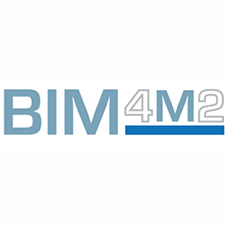Grace Lewis, Content & Community Manager for Barbour Product Search, member of BIM4M2 promotions working group.
Yesterday I visited the Government Construction Summit, the official government supported construction industry event offering unique insight into how leaders are working to build sustainable growth.
With a particular interest in BIM to help support our product manufacturer clients in the implementation process, I attended the ‘Measuring the Benefits of BIM’ breakout panel session to gain further insights into how early adopters are already benefiting from the technology.
Chaired by David Philp, Head of BIM & Head of BIM Implementation, Mace Group & Cabinet Office, the panel consisted of the following speakers:
• Iain Miskimmin: Senior Industry Consultant, Bentley Systems UK
• Mark Bew: Chairman, UK Government BIM Implementation Group
• Terry Stocks: Deputy Head of the Estates Department, Ministry of Justice
• Andrew Pryke: Managing Director, BAM Design
• Jon Kerbey: Head of Systems and Asset Information, High Speed 2
How is Level 2 BIM strategy unlocking benefits
From the BIM Task Group website, Level 2 BIM is described as ‘file based collaboration and library management’, which can be achieved through a series of different processes and tools. Crudely defined, Level 2 BIM is a series of domain specific models with the provision of a single environment to store shared data and information, in our case COBie UK 2012.
Mark Bew commented he has seen an increased awareness of BIM across the market, noticing more people having digital conversations about the technology. He also said that the BIM Level 3 strategy is expected in the autumn, and like Level 2, it will be a migratory approach.
It was agreed across the panel that already we are starting to see the benefits of BIM, including improvements in efficiency and reductions in waste. Jon Kerbey explained that BIM can make the whole process as efficient as possible, knowing what you want from the supply chain, and the supply chain knowing what to expect. Jon also talked about the data level, making sure you get value out of the data and futureproofing the whole project life cycle.
Terry Stocks explained that BIM enables companies to deliver projects with better value, and unlocks talent. He said that Government Soft Landings, adopting a mind-set and a process to align design and construction with operational asset management and purpose, are at the heart of what we do. Andrew Pryke supported this point by commenting he has seen BIM helping to integrate the FM and operational stages at BAM Design, bringing benefits to the process.
For Iain Miskimmin, the biggest barrier to the adoption of BIM in the industry is education and vision. So while more conversations are happening about BIM, I think it is important that the industry is, and continues to, share best practice, as a lack of understanding could lead to fear of adopting BIM.
It was then opened up to the floor to ask questions for the panel. Here are a couple:
How far have you seen collaboration across the supply chain so far with BIM?
Collaboration was a reoccurring theme throughout this session, including the importance of collaboration throughout the supply chain. BIM provides an opportunity for the operational phase to become involved. However, it was seen as being a slow process to change the culture. At HS2, Jon commented that technology is helping with collaboration and they were having a real drive to support this.
What are the key factors in putting forward a BIM business case?
A great question, which returned the following responses:
• Efficiency savings
• Reducing waste
• Having the right contractual terms in place
• Having the right data to take through the life of a project
• Externally, does it give value to the client's customers?
• Internally, does it win work?
• Understanding what is going to be built, and how
• Providing benefits throughout
• Reducing risk
• Reducing time on site
The session was insightful and reinforced the idea that BIM is as much about collaboration, people and processes, as it is about the technology.
As well as the panel session, throughout the event delegates could visit a dedicated BIM Hub with experts on hand from various BIM working groups, including BIM Task Group, BIM4M2 and CIOB, to ask the important questions linked to Government Soft Landings, new business standards and getting up to speed with Level 2.
BIM 4 Manufacturers and Manufacturing (BIM4M2)
BIM4M2 is a working group consisting of people and organisations concerned with BIM for manufacturers (the organisations) and manufacturing (the process) and was developed to support the work of the BIM Taskgroup.
The group’s long term vision is:
For further information about BIM4M2, visit www.bim4m2.co.uk, or you can follow @BIM4M2 on twitter or join the LinkedIn group.



